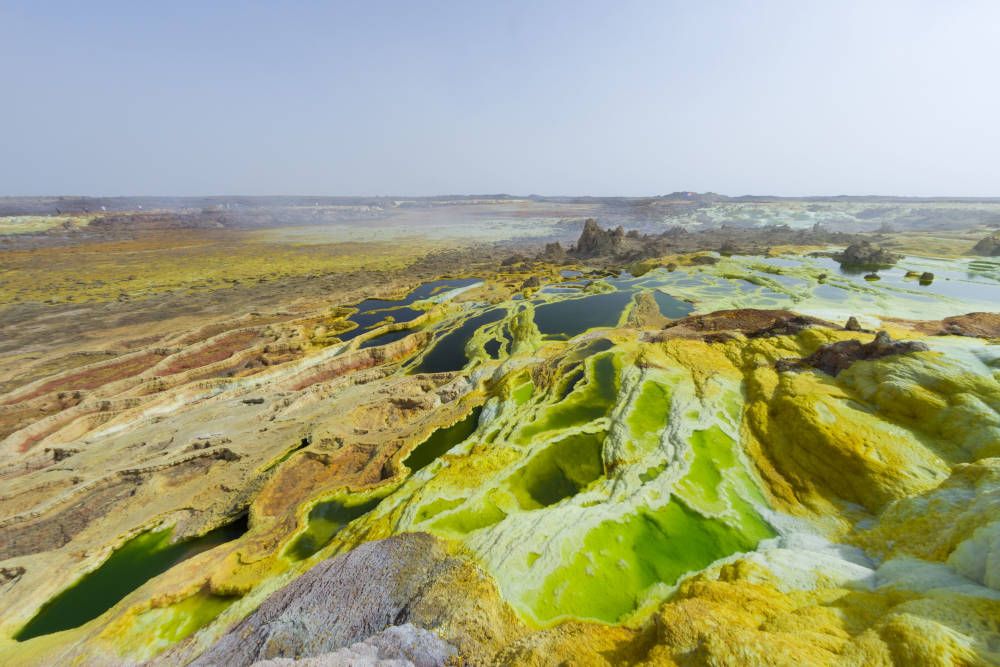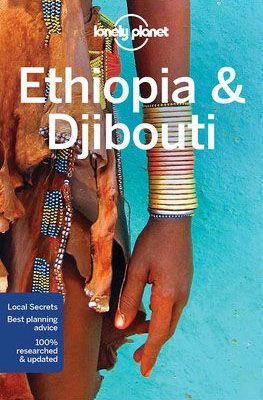The Danakil Depression is an area in the northeast of Ethiopia. It covers approximately 135,000 square kilometres and is known as one of the driest and lowest areas in the world. An expedition to the Danakil Depression is certainly not easy. But you will experience a trip through the most fascinating landscape of Africa. Take at least three or four days for this.
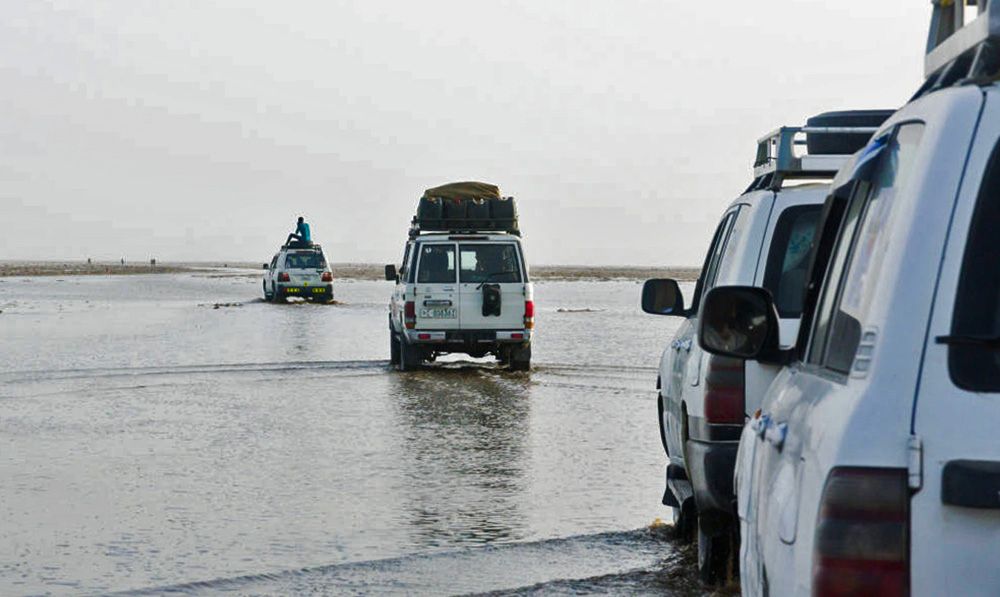
Makele, starting point for the trip to Danakil Depression
A visit to the Danakil area usually starts in the city of Mekele. This university town is the capital of the Tigray region and offers some attractions. In addition, you will find enough comfortable accommodation here to spend the night before and after the expedition.
The tours leave from Mekele and return there. The Danakil Depression can only be visited with a 4WD. There is no public transport. There is no asphalt or hotel on the route. You can justifiably call it an expedition and an expedition should include everything: sleeping mats, chairs, kitchen utensils, food and drinking water. Besides that, a cook who prepares a delicious meal for you, a local guide who explains the area and a soldier who keeps an eye on the area and speaks the language of the Afar population.
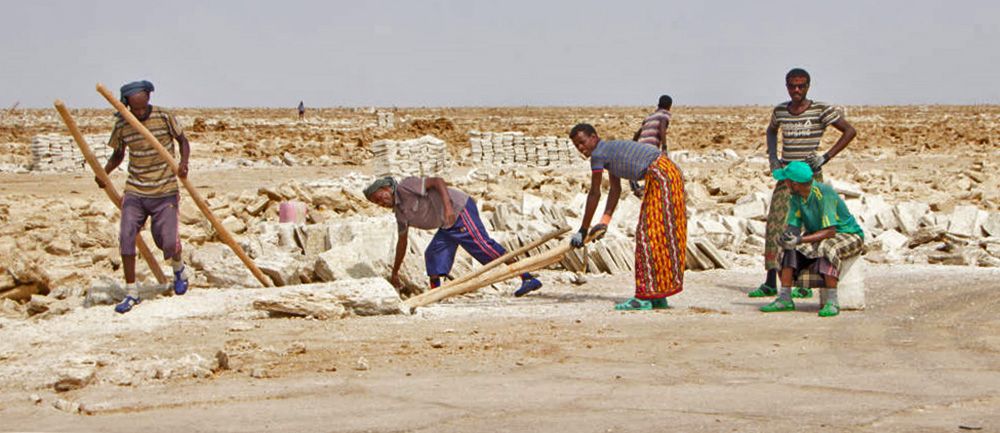
On the way to the Danakil Depression
The first day is already spectacular. After lunch in Bere Ale and the necessary permits having been arranged, you enter the area of the Danakil Depression. The jeep finds its way through the desert and right at the start you can see an ostrich running away or a hut made of sticks and plastic.
The Danakil Depression is inhabited by the Afar, a tribe that is mainly found in the north of Ethiopia, Eritrea and Djibouti. Sometimes the Afar population in this area is called the Danakils because they mainly live in this area. The Afar have built an existence by salt mining. The first thing to visit is the dry salt lakes.
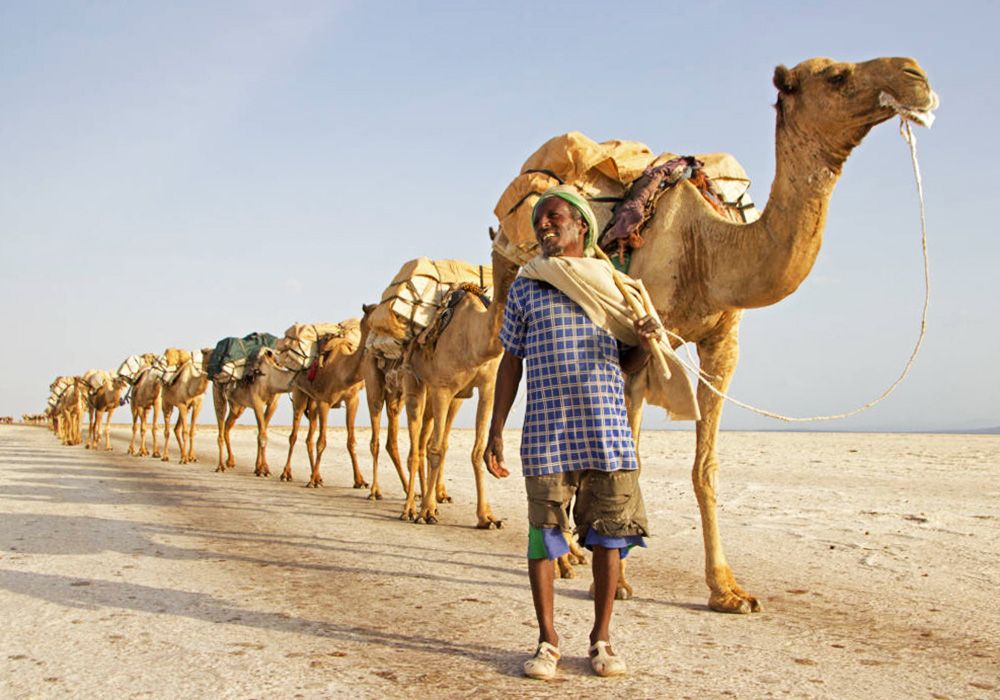
Salt extraction by the Afar
Danakil is a dry area with many salt flats. The people of the Afar tribe live and work here under appalling conditions. Every day they cut large blocks of salt from the bottom of the dry lake Aret Ale in a traditional way. During their hard work, the temperature sometimes rises above 50 degrees Celsius.
Smaller blocks are chopped from the large blocks to make them suitable for transport. Each block gives the Afar 4 to 5 birr. They sell it to the men they transport with their camels to civilisation. For example, they move to Mekele. On the local market there you can see them coming in the early morning.
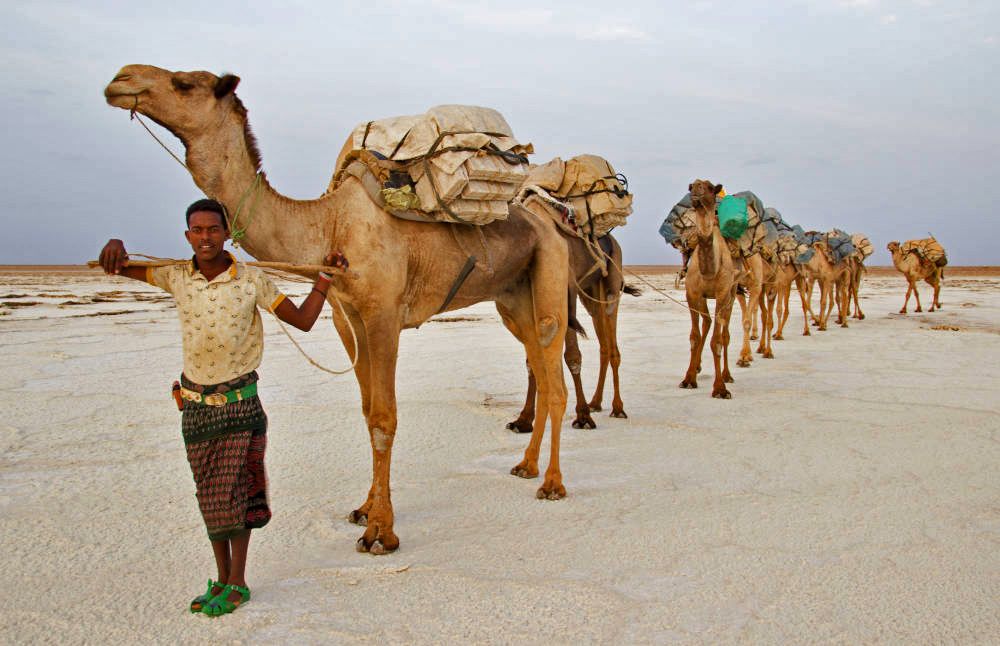
It is very spectacular to see the caravans in the evening. Hundreds of camels pass by in a procession, all loaded with salt. This is the largest salt market in Ethiopia and it is one of the last places in the world where you can still come across salt caravans. It is mainly walked at night to avoid the heat as much as possible.
You can sleep in Hamedela where there is a local bed and a hut. Some call this area the gateway to hell. In the wrong season it is very hot. But someone who looks into it and has prepared well, has the best time in Ethiopia. First, you enjoy a delicious meal prepared by the cook. And if you have a beer or some soft drinks in a cooler, then your evening only gets better. But the highlight is sleeping under a beautiful starry sky. It is actually a shame to close your eyes, so phenomenally beautiful is the night here.
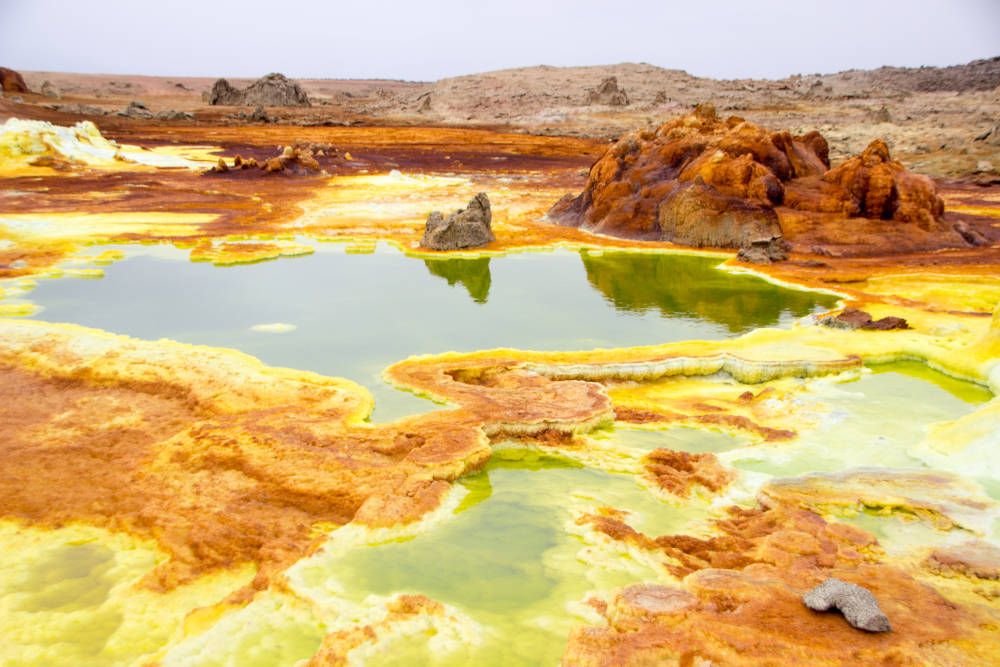
The colours of Dalol
Dreams come true when you see the colours of Dalol. Sulphur, iron oxide, salt and other minerals have taken on capricious forms. The colours white, green, orange and yellow ochre form a surrealistic natural painting in a rugged landscape. Here you can walk between the formations and hear water and gases bubbling. It is an unworldly and bizarre landscape. Every day new formations are created by the small geysers that are active here.
If you haven’t been here yet and see the photos of this natural landscape on the Internet, you think all those photos have been edited. When you admire the landscape with your own eyes, you go from one surprise to the next. You keep taking pictures and each is more beautiful than the last.
The average temperature is above 30 degrees Celsius, so it is advisable to visit the area early in the morning when it is not too bad. After 10 o’clock it gets too hot and it is better to look for a shady spot.
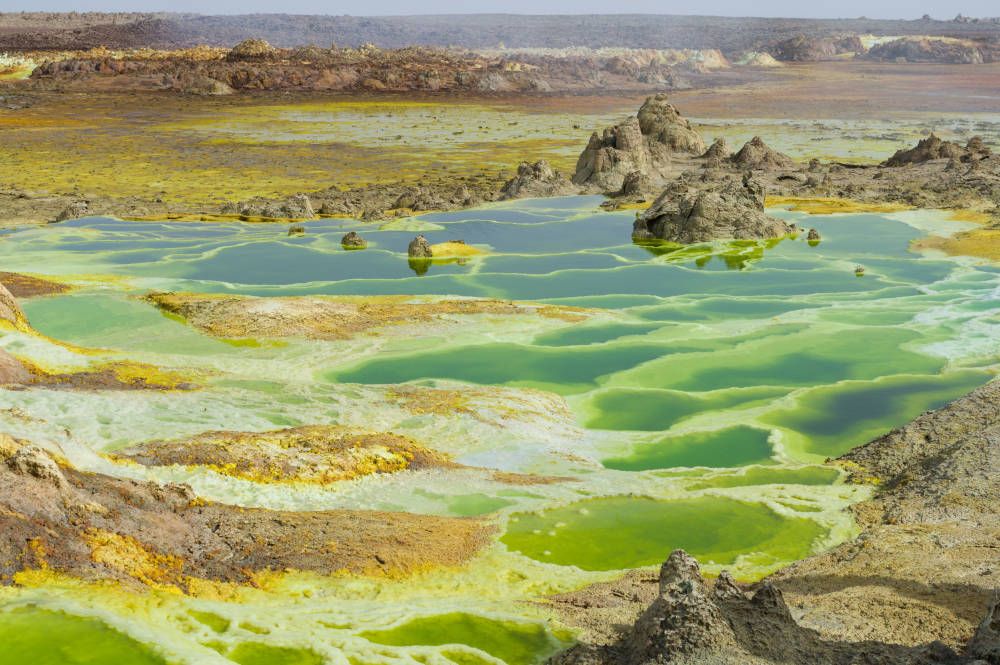
The red magna of the Erta Ale volcano
One of the spectacular walks of these days is the trip through the lava fields to the edge of the crater. This is the heart of the lively volcano Erta Ale. An overnight stay in this area is unforgettable. When you arrive at the foot of the crater, the cook will prepare another meal for you. In addition, they prepare the camels for the transport of the mats and blankets for the night. You sleep at the top of the crater so that you can see the bubbling of the red magma in the dark. An indescribably beautiful experience!
It is a trip of about 3.5 hours walking to the top through an unearthly, unfriendly, but beautiful area. It is recommended to start in the afternoon to avoid the worst heat of the day. At sunrise you start walking downhill and breakfast is ready. You are a great experience richer.
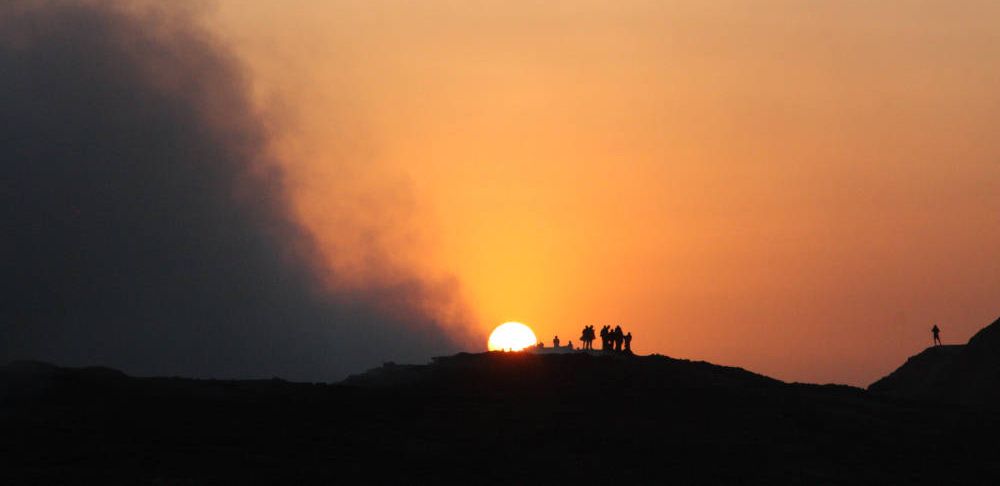
Practical matters
- The starting point for an expedition to the Danakil Depression is Mekele.
- The easiest way to reach Mekele is via a domestic flight from Addis Ababa or Aksum. By bus from Aksum it takes at least eight hours. From the capital you are almost two days away.
- There is plenty of accommodation in Mekele and you can book in advance.
- The price for a trip from Mekele for example 3 days is between €100 and €200 per day per person. The difference lies in the time of the year you go, how big the group is and whether you join another group.
- There are many travel agencies in Mekele that offer a tour to the Danakil Depression. Do not be led by the cheapest price, but look at the programme, group size, care on the way and the experience the agency has with tours to the Danakil Depression. Don’t book a tour with an agency that has never been in the area before.
- Take sufficient measures to protect yourself from the sun and the heat during the excursion.
- People who cannot tolerate extreme heat, should refrain from this excursion.
